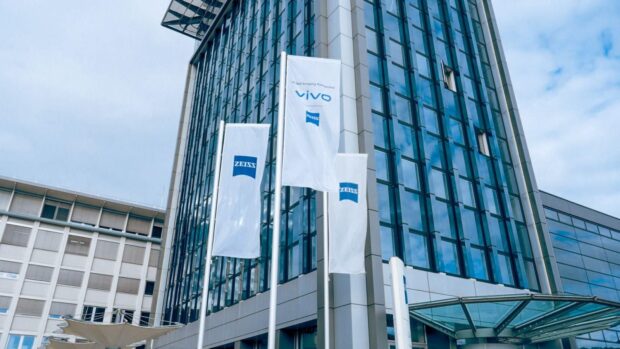In the world of smartphone photography, partnerships with camera and optics brands have become increasingly common. Yet, few collaborations are as innovative or impactful as the one between Vivo and ZEISS. Since 2020, the two companies have combined their expertise to revolutionize smartphone imaging, particularly in Vivo’s V-series and X-series smartphones. A visit to the ZEISS headquarters in Oberkochen, Germany, offers a glimpse into how the 178-year-old optics company shapes the future of mobile photography.

The Heart of ZEISS: Where Tradition Meets Innovation
Located in Oberkochen, about two hours from Munich, the ZEISS headquarters is more than just an office. It is a hub of optical mastery, where cutting-edge research meets a deep-rooted legacy in precision engineering. The headquarters serves as a testament to ZEISS’s longstanding commitment to excellence, housing not only its corporate offices but also the ZEISS Optic Museum and several state-of-the-art testing facilities.
A tour of the ZEISS headquarters reveals the meticulous craftsmanship that has defined the brand for nearly two centuries. From its early work in microscopes to its world-renowned camera lenses, ZEISS has continuously pushed the boundaries of what optics can achieve. Today, that same attention to detail is applied to smartphone cameras, thanks to its partnership with Vivo.
Inside the ZEISS Optic Museum: A Journey Through Time
The ZEISS Optic Museum is a highlight of the headquarters, showcasing the company’s rich history and its influence on various industries. Visitors are taken on a journey through the evolution of optics, from early microscopes to modern cine lenses that are beloved by filmmakers worldwide. The museum offers a unique look at the craftsmanship behind ZEISS products, many of which are still handmade, a rarity in today’s tech-driven world.
For those interested in smartphone photography, the museum serves as a reminder of the expertise that ZEISS brings to its collaboration with Vivo. The precision, craftsmanship, and attention to detail that have made ZEISS lenses a favorite among professionals are the same qualities that go into the smartphone cameras used by everyday consumers.
The ZEISS Testing Labs: Pioneering Smartphone Camera Technology
Beyond its historical achievements, ZEISS is at the forefront of innovation in mobile photography. The testing labs at the headquarters are where the magic happens, and this is where Vivo and ZEISS truly come together. Here, ZEISS engineers test and refine smartphone camera lenses to ensure they meet the high standards of both brands.
In the labs, smartphone cameras are subjected to a series of rigorous tests, designed to evaluate color accuracy, sharpness, and lens aberration. These tests are essential for achieving the “ZEISS Look,” a term that refers to the high-quality, precise imaging associated with ZEISS lenses. While many of these tests focus on traditional optics, ZEISS has also adapted to the unique challenges of smartphone photography, including user demand for faster autofocus and improved bokeh effects.
For the Vivo V40 Pro, ZEISS introduced two specific tests: one measuring autofocus delay, and another evaluating the different types of ZEISS-stylized bokeh effects available as filters. These tests are a direct response to the changing expectations of smartphone users, particularly in the post-COVID era, where mobile photography has become an even more integral part of daily life.
Crafting the Future of Smartphone Photography
The visit to ZEISS headquarters shows the importance of collaboration in pushing technological boundaries. While ZEISS is known for its best-in-class lenses, the partnership with Vivo demonstrates how these high standards can be translated to the smartphone market. By leveraging ZEISS’s expertise, Vivo has been able to create smartphone cameras that deliver professional-quality results, all within the compact form of a mobile device.
In the end, the biggest takeaway from the ZEISS headquarters is not just its impressive history or state-of-the-art testing labs. It is the realization that the future of smartphone photography is bright when the right partnerships are formed. With Vivo and ZEISS working hand-in-hand, the possibilities for mobile imaging are endless, offering consumers a chance to experience 178 years of optical innovation right in their pockets.
ADVT
This article is brought to you by vivo Philippines.
Read more stories here:
TECNO partners with Billboard Philippines for Year One Anniversary celebration
These Galaxy AI features can make accomplishing tasks easier
Single largest contribution to date: SMAC donates Php 14.93M to Globe’s Hapag Movement